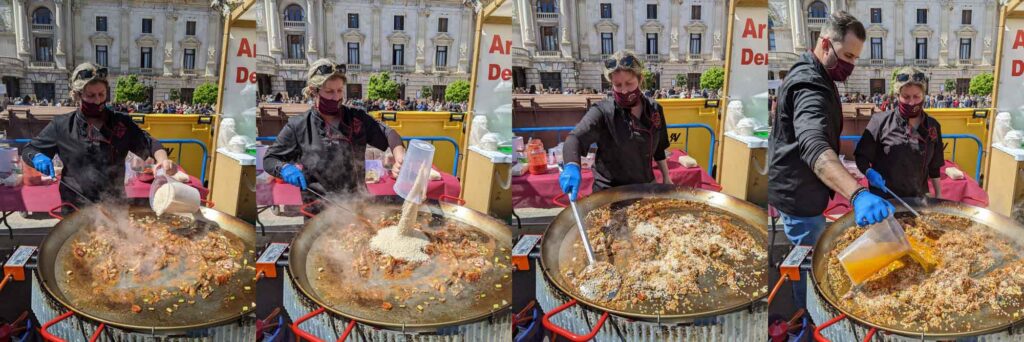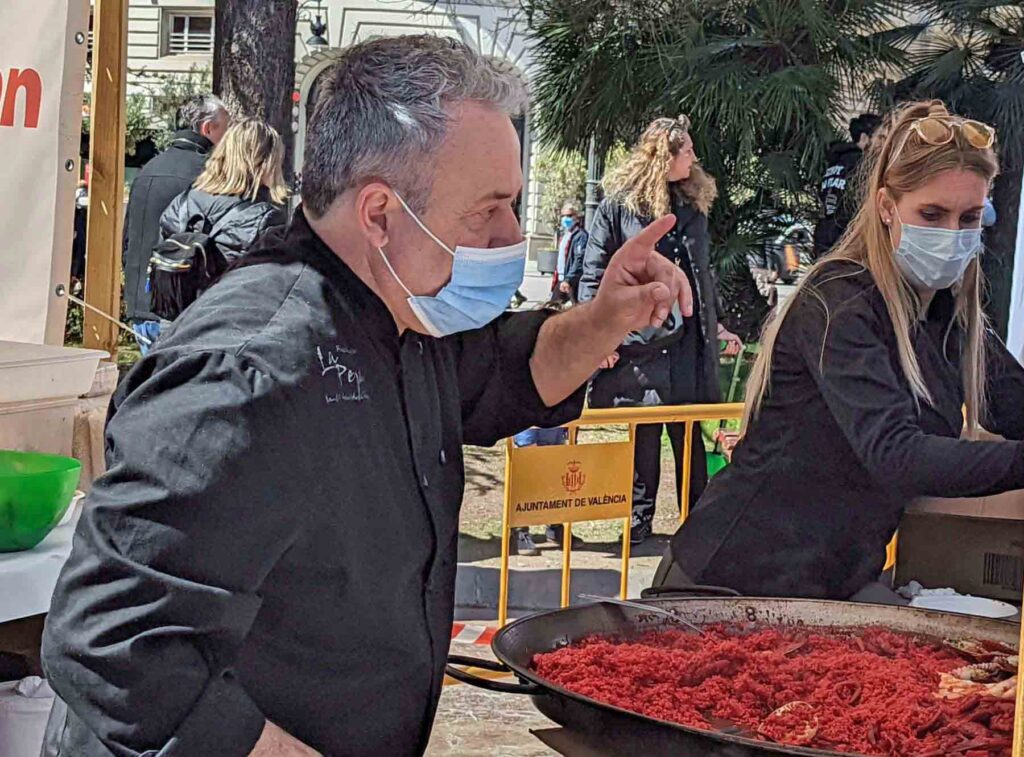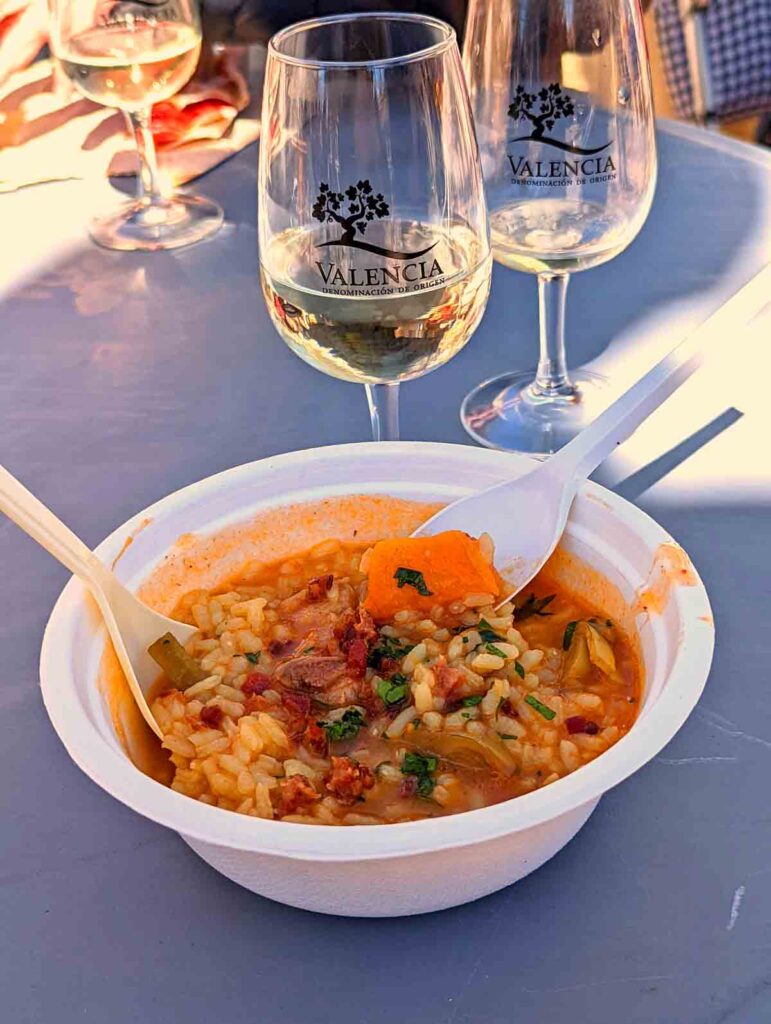
Just walking around the Tastarròs festival provides an education in the astonishing variety of Valencian rice dishes. By far, the bulk of them are cooked in the wide, flat pans that we tend to associate with paella. In fact, the pan is called una paellera. The photo sequence above shows the first steps in making a paella.

The paellas range in color from a ruddy yellow to deep red. Here is celebrity chef Santi Garrido of La Pepa Bluespace (lapepabluespace.com/) serving his arroz rojo de carabineros, which had eager diners lined up in a queue that stretched halfway around the plaza. Part of the appeal was his fame (he’s a Valencian culinary rock star) and partly that he was using the huge red prawns (carabineros) in the dish. It also contained a lot of sweet red paprika. Garrido’s restaurant is located in the Alboraia neighborhood, formerly a suburb of Valencia but long since absorbed into city limits. Fortunately, it’s on a Metro line. If you check the website, you’ll see that you can order a paella to bring home for only €12-€14.
Of course, that won’t be one of the giant paellas served at Tastarròs. We must admit that we’ve seen several people buying those gigantic pans to take home and make paella for a crowd. They usually require two people to carry them down the street. Making paella for a crowd in Valencia is like throwing a really big barbecue party in the U.S.
Here’s a short video of one of the teams making paella. Warning: It might make you salivate.
The other side of Valencian rice cooking
A surprising number of the offerings at Tastarròs were melosos, or soupy rice. These are cooked in a wide, deep pan—like a flat-bottomed wok. Many of them have a seafood base and seem to be cooked with stock made by boiling shrimp heads and finfish bones. Many other use various cuts of pork to provide flavor. We give a recipe below that uses pork ribs. The cut known in the U.S. as “spare ribs” works nicely.
ARROZ MELOSO DE CALABAZA ASADA Y SETAS
This meloso of roasted pumpkin and mushrooms was very popular at Tastarròs. Several chefs were offering it. The photo below shows one that we enjoyed immensely. Our recipe is adapted from a similar paella dish published in El País, one of Spain’s national newspapers (elpais.com). Many vegetable vendors in Valencian public markets sell roasted pumpkin by the kilo, which speeds the preparation considerably. You can also use any hard winter squash like acorn or butternut.
Serves 4
INGREDIENTS

- 15g of dehydrated porcini fungi (boletus)
- 400ml warm water
- 400g roasted pumpkin, cut into 1-inch pieces
- 5 tablespoons extra virgin olive oil
- pinch of salt
- 400g pork ribs, cut small
- 1 medium onion
- 1 clove garlic
- 200g of assorted fresh mushrooms, cleaned
- 100 ml of white wine
- 250g Valencia rice
- 5-6 threads of saffron
- 600 ml of vegetable broth
- Salt to taste
DIRECTIONS
Rehydrate the mushrooms with 400ml of water for 15-20 minutes. Strain and save the liquid. Add half the roasted pumpkin to the mushroom flavored water. Blend until you have a semi-liquid purée. Reserve.
Heat the olive oil in a deep pan and toss in a pinch of salt. Add the ribs and fry until cooked through. Remove ribs and reserve.
Peel and chop onion, garlic, and fresh mushrooms. Add onion to the hot oil. Cook until lightly golden. Add chopped garlic and mushrooms and cook for a few minutes until mushrooms begin to reduce. Add the rehydrated mushrooms and deglaze with 100 ml of white wine.
Add rice and saffron, stirring 1-2 minutes to coat. Add the pumpkin puree and cook a few minutes, stirring. Add the cooked ribs and the vegetable broth and bring to a boil. Reduce to a simmer and stir periodically so that the rice releases its starch (about 20 minutes). When the rice is still just a little too firm, add the roasted pumpkin pieces. Continue cooking until rice is al dente. Add salt if needed.
